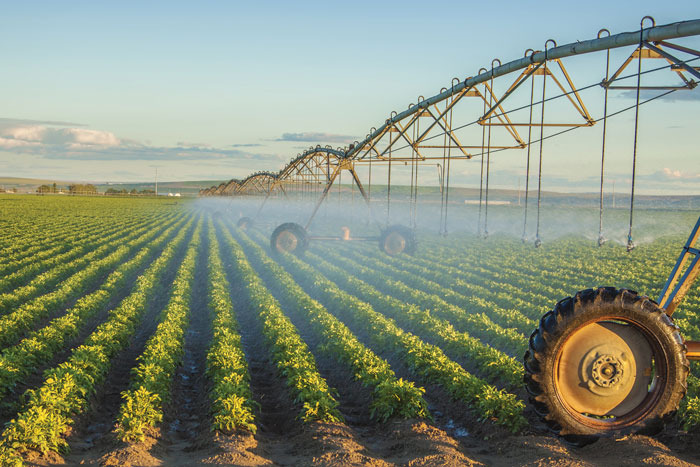



2021 was a significant year in terms of climate change. Extreme weather patterns, floods and droughts alike shook the world. A ground-breaking report by the Intergovernmental Panel on Climate Change (IPCC) moved the United Nations Secretary General to describe the year as “a code red for humanity”.
We saw world leaders coming together to address climate change with the US joining the all-important Paris Agreement; the environment ministers of G7 countries renewing their climate agreement; and NATO, the world’s most powerful defence alliance, discussing climate change for the first time at its Leaders’ Summit.
These efforts resulted in major commitments being made towards protecting wildlife and the environment, including a ban on the use of plastic; steps against the use of fossil fuels; and intentions expressed to achieve net-zero emissions of greenhouse gases (GHGs) as soon as possible and by 2050 at the latest.
Despite moves in the right direction, the G20’s 2021 Climate Transparency Report published in October told another story altogether. It stated that the world’s richest nations, responsible for around 75% of global GHG emissions, are still not on track to limit global warming, despite raising ambitions.
EU ambitions
The European Union (EU), a significant contributor to carbon emissions and an important global player in the fight against climate change, rolled out ambitious plans in 2021. In June, it issued the European Climate Law, as part of the European Green Deal, for Europe to become climate neutral by 2050.
Under this, intermediate targets were set to reduce net GHG emissions by at least 55% by 2030 – this is known as the ‘Fit for 55’ package and includes provisions for a Carbon Border Adjustment Mechanism.
Also released as part of the package was the revised Renewable Energy Directive, which bans the use of palm oil and talks about using sunflower oil as an alternate biofuel which is produced in Europe. The reason stated for the ban on palm oil is that it ‘contributes to extensive deforestation in Indonesia and Malaysia’.
The initiative, though, ignores the impact on vulnerable communities in developing countries. The upcoming ban on palm oil will affect the livelihood of thousands of smallholders, who make up a substantial percentage of producers.
It also disregards the high productivity of the oil palm, which produces more oil per hectare than other vegetable oil crops. As per the 2018 study by the International Union for Conservation of Nature, the oil palm produces up to nine times more oil per unit area than other major oil crops. Palm oil, the report says, produces 36% of food oil globally on just 8.6% of the land dedicated to food oil production. Rapeseed produces four to 10 times less oil than palm oil per unit of land and requires the use of more fertilisers and pesticides. More than that, it stores less CO2 than palm oil.
The answer to finding a balance between the needs of palm oil producers and the protection of forests may lie in a proposal by the European Commission. Published in November 2021, the ‘Proposal for a regulation on deforestation-free products’ acknowledges for the first time that voluntary schemes have been ineffective in achieving the required outcomes; it also strongly supports legally-binding certification of commodity crops as an effective policy measure to curb deforestation.
Both pre-regulation impact assessment and public consultations – which received nearly 1.2 million responses from stakeholders – showed clear support for legally-binding measures, including mandatory public certification schemes.
Malaysia is already ahead of the game in this regard. In 2015, it launched the Malaysian Sustainable Palm Oil (MSPO) standard, a national certification scheme that is enforced by the government for sustainable oil palm cultivation and palm oil production. It has since been made mandatory.
The MSPO has achieved commendable outcomes in guaranteeing that the palm oil produced is sustainable across the supply chain, with 93% of all the sector having achieved certification to date. In addition, Malaysia has reduced deforestation levels for four consecutive years. But the question remains: When will the EU pay heed to this?
Deforestation and global food systems
Another area that received attention in 2021 was deforestation and global food systems. At the end of 2021, the IPCC Working Group I report, ‘Climate Change 2021: the Physical Science Basis’ was published; it highlights that global temperatures will likely rise 1.5 degrees Celsius by around 2030.
The UN Climate Change Conference (COP26) was held in Glasgow from October to November 2021, with a worldwide focus on the same goals and priorities. Leaders from 110 nations signed a pledge to eliminate deforestation by 2030.
It also focused on the need to limit investments in contributing projects, and to implement restrictions against tree removal to make room for animal grazing and growing of crops like soybean, cocoa and oil palm.

The Forest, Agriculture and Commodity Trade Dialogue, held ahead of COP26, brought together the largest producers and consumers of internationally traded agricultural commodities (such as palm oil, soybean, cocoa, beef and timber) to promote trade and development, while simultaneously acting to protect forests and other ecosystems.
Additionally, global food systems – and their relationship to climate change – received a new level of attention in 2021. It became a major topic of discussion in light of several significant new government commitments at COP26. The UN Secretary- General’s Food Systems Summit, which took place during the General Assembly in September, featured food and agriculture both as a sector heavily affected by the climate crisis and as a major source of GHG emissions.

As global attention to food and climate issues grows, farmers – especially smallholders in the poorest countries – will need much more attention and support to weather the challenges they face on the front lines of the climate crisis in 2022. The battle against climate change is a global priority and would best be solved through cooperation and partnership.
Taking the pledges made at COP26 forward, increased collaboration is required between palm oil producing countries and buyers to ensure that global markets reward practices that promote sustainability and disincentivise damaging practices. The need is that the commitments made throughout 2021 are translated into legislative action within 2022-23, with transparency, accountability and involvement of indigenous peoples and local communities from the Global South particularly.
The main development to monitor in 2022 will be IPCC’s sixth assessment cycle with its three reports – these will contain the most up-to-date scientific assessment on the impacts of climate change and its potential solutions. Its results will deeply influence and help shape the global climate conversation toward COP27.
While 2021 was full of studies, reports, policies and promises around climate change, not all were fulfilled or paid heed to. Progress in 2022 will, among other things, depend on greater North-South collaboration and sincere partnerships.
Centre for Sustainable Palm Oil Studies
This is an edited version of the article which is available at:
https://thecspo.org/2021-in-review-global-environmental-developments-future-of-palm-oil/